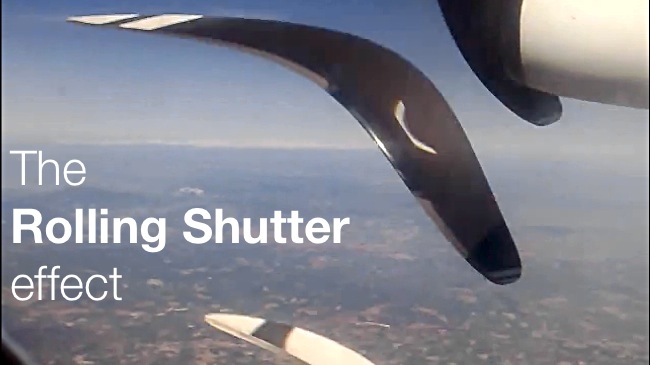
Rolling Shutter is a type of distortion that affects cameras across the price spectrum. The more you know about it, the better you can deal with it
Rolling shutter sensors are a lot easier to build than sensors that don't exhibit this type of effect, and the first people to popularise a serious digital cinematography device which used one were RED. The merits of this decision are discussed to this day; while it made certain things (high frame rate, high resolution) much more affordable, it does inevitably cause at least theoretical problems when photographing anything that happens quickly. Because it makes headline features like resolution and frame rate possible, or at least possible at much lower cost, most high end cameras – including Alexa and F65 – use the technique.
Fast-moving objects
The most commonly seen rolling shutter problem is distortion of fast-moving objects, or of the whole frame during fast camera movement. In most serious cameras – anything better than a Canon 5D, for instance, which in any case wasn't developed as a motion picture camera – this is, for most practical purposes, barely a problem. The test for it involves shooting a revolving vertical drum with a white vertical stripe painted on it; the slower the rolling-shutter readout, the more of a diagonal line it becomes. On an Alexa, the effect is barely visible until the drum is rotating very quickly. It's still occasionally enough to cause problems when integrating footage from non-rolling-shutter sources, such as CG renders, but there are corrective plugins from people like The Foundry which more or less obviate the issue.
Pulses
A much more insidious problem is the sensitivity of rolling-shutter cameras to brief pulses of light, which can be quite common. The most famous source is the xenon flash tube, as used in camera flashguns and some effects strobes. These can produce flashes of light down to a single microsecond, fast enough to image bullets in flight, but it isn't really the duration that's the problem – it's the rate at which the light level rises or falls. Xenon flash tubes, LEDs, lightning, and even flickering fluorescent tubes (perhaps being controlled by a flicker box for the famous electrical-arc effect) can all produce flashes of light which have a very sharp rise or fall time. Making the camera read out faster – that is, making it have less of a rolling shutter – can make it less likely that the problem will occur, but it can never eliminate the problem entirely. If the light level changes during the period in which the sensor is read, the result can be a partially-illuminated frame. It's an insidious problem because trying to paint in a matching solution to the non-illuminated part of the frame, in post, by hand, is extremely difficult.
"Flicker-free"
Perhaps more problematic, because it's more common, is any situation involving a non-tungsten light source being driven by an electronic ballast. Usually, ballasts which are advertised as “flicker free”, at least in domestic lighting, actually produce a very high frequency flicker. This flicker is much faster than humans can perceive, and so high that the variation in light level caused by a camera either missing or catching a few more or less pulses of light each frame makes only an insignificant difference to the effective illumination. However, this is not so, necessarily, with a rolling-shutter camera. Even extremely fast flicker may create a visible change in brightness during the period in which the sensor is read out, perhaps producing a sort of venetian-blind effect down the frame, which may slowly drift up or down as the timing of the camera and light drift against one another. Sometimes this is only visible on a bright background or when skipping through the footage in the edit, which may make the slow drifting movement of the effect more obvious.
Solutions
For productions which want to use stroboscopic light sources, there are solutions. Outsight's CreamSource LED light, a flat panel with output similar to a 575W HMI, has the ability to read a synchronisation signal and produce flashes which are guaranteed not to interrupt the sensor's readout period. You can also produce strobe flashes in post, although generally this will involve simply brightening the whole frame – sometimes an acceptable compromise – or risking an unconvincing painted-in effect. You can use a high end camera which may produce the problem rarely enough that careful viewing of key material, with the option to do retakes if you happen to catch a problem frame, may sometimes be acceptable. You can use a camera with a mechanical shutter option, such as F65, which avoids the issue entirely by putting a lump of metal between the light and the sensor during read-out.
Ultimately, though, if you're a DSLR shooter or using one of the recent Canon range derived from similar technology, it's a tricky situation until F55, with its global shutter, becomes available.
Or, you could shoot film. James Cameron, an expert user of physical effects, famously used xenon strobes to enhance the pulse rifle fire in Aliens, and while film cameras do theoretically have a rolling shutter, it's in such an out-of-focus plane that there is no hard edge and the effect is generally not objectionable.